US offshore wind is poised for record investment
Oil & gas majors, foreign investors and global infrastructure funds, and US utilities are likely to be the most active in the segment.

Europe is the leader in offshore wind, with nearly 25 GWs of installed capacity in 2020. Asia has about 10 GWs installed, the vast majority of which is Chinese. But despite the tremendous potential for offshore wind in the US, there are only two offshore wind farms operating in the country, with a combined total of 42 MWs of installed capacity.
That's about to change. The US is on the cusp of transforming itself from a laggard to a fast follower in offshore wind. In doing so, it will build on lessons from around the globe.
A recent sign of this shift came in May 2021 when the Biden administration approved the Vineyard Wind project off the coast of Massachusetts, an 800 MW windfarm that would start operating in 2023. The administration has a goal of permitting 16 offshore wind farms before the end of President Biden’s term, and in addition to approving Vineyard Wind, it began conducting or progressing environmental reviews for four other projects in 2021: Revolution Wind (Rhode Island), South Fork (New York), Ocean Wind (New Jersey) and Empire Wind (New York).
The American Clean Power Association estimates that the US could have 9,112 MWs of offshore wind capacity installed by 2026, which would bring the US close to where the UK and China are today in only five years. Moreover, the Biden administration recently set a goal of installing 30 GWs of US offshore wind capacity by 2030, and 110 GWs by 2050. A new standalone investment tax credit for projects that begin development before 2026 will incentivize developers to help the US achieve these goals.
The Biden administration also set a course for the US to reach net-zero greenhouse gas emissions economy-wide by no later than 2050. Many states, from Massachusetts to Virginia, had already set net-zero targets and are taking steps to achieve them, including issuing RFPs for offshore wind development.
All the while, technology continues to advance, bringing costs down and facilitating deployment at scale. That includes rapid development of floating turbines that will enable offshore wind generation in deep waters off the coasts of the Pacific Northwest, California, Hawaii and Maine. There is also interest in developing offshore wind projects in the Gulf of Mexico and the Great Lakes region.
To catch this wind, the US will not only need to install thousands of turbines, it will have to build the transmission and interconnection infrastructure to carry power to shore and deliver it to the grid. Success will depend on the ability to finance large projects as well as navigate often complex regulatory rules, particularly related to the environment. We hope the articles collected in this volume will help proponents in their efforts to accelerate development of offshore wind in the US.
Oil & gas majors, foreign investors and global infrastructure funds, and US utilities are likely to be the most active in the segment.
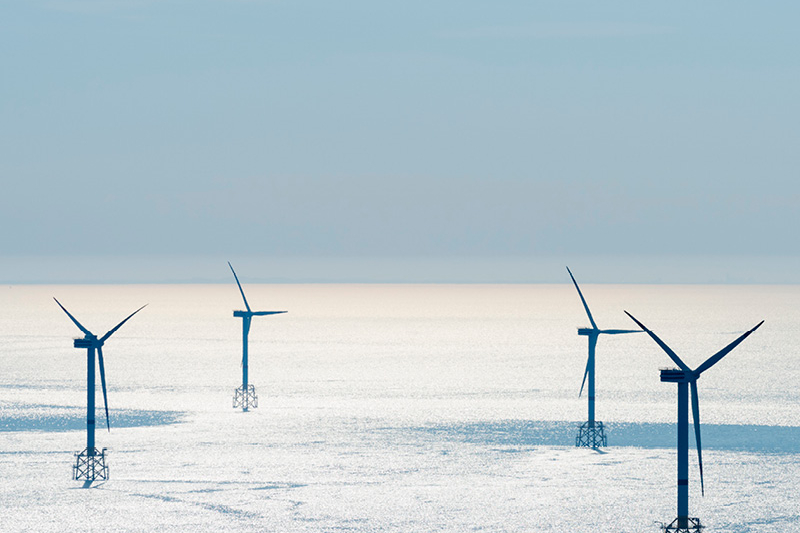
To meet project goals, proponents must understand rules related to the environment, species and habitats, and visual and noise impacts.
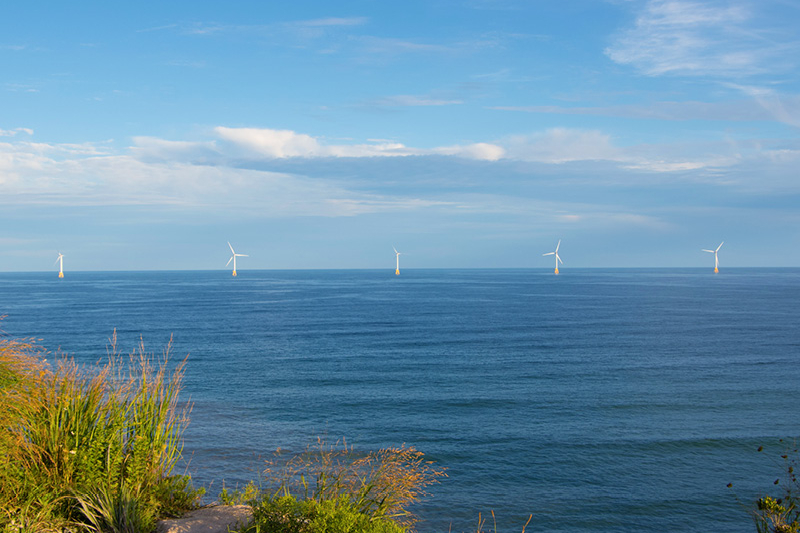
Government incentives are making it easier to finance offshore wind projects, and developers are taking lessons from Europe to manage costs and risk, and attract investors.
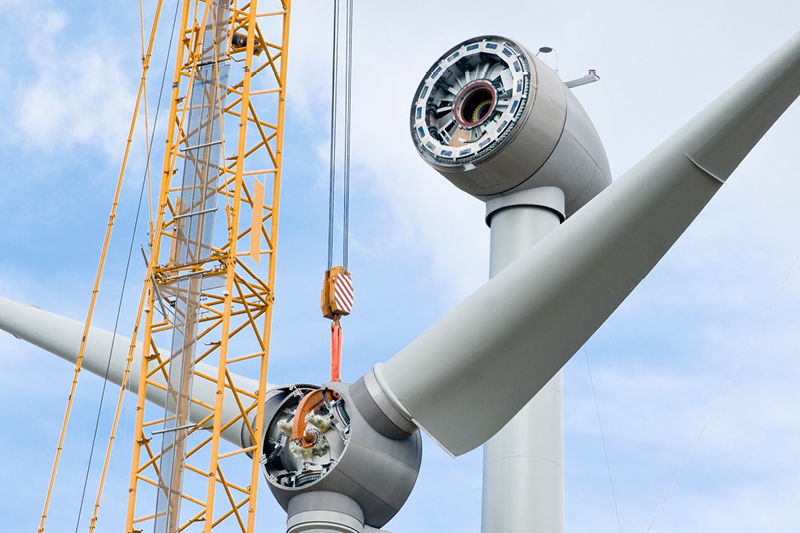
By Daniel Hagan, Fredrick Wilson, Aaron Bryant
How market design, regulation and financing will shape the future of offshore wind.
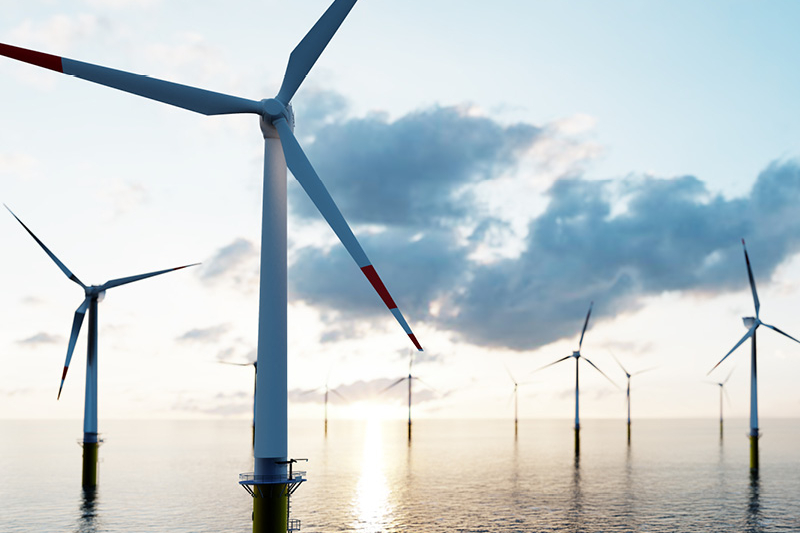
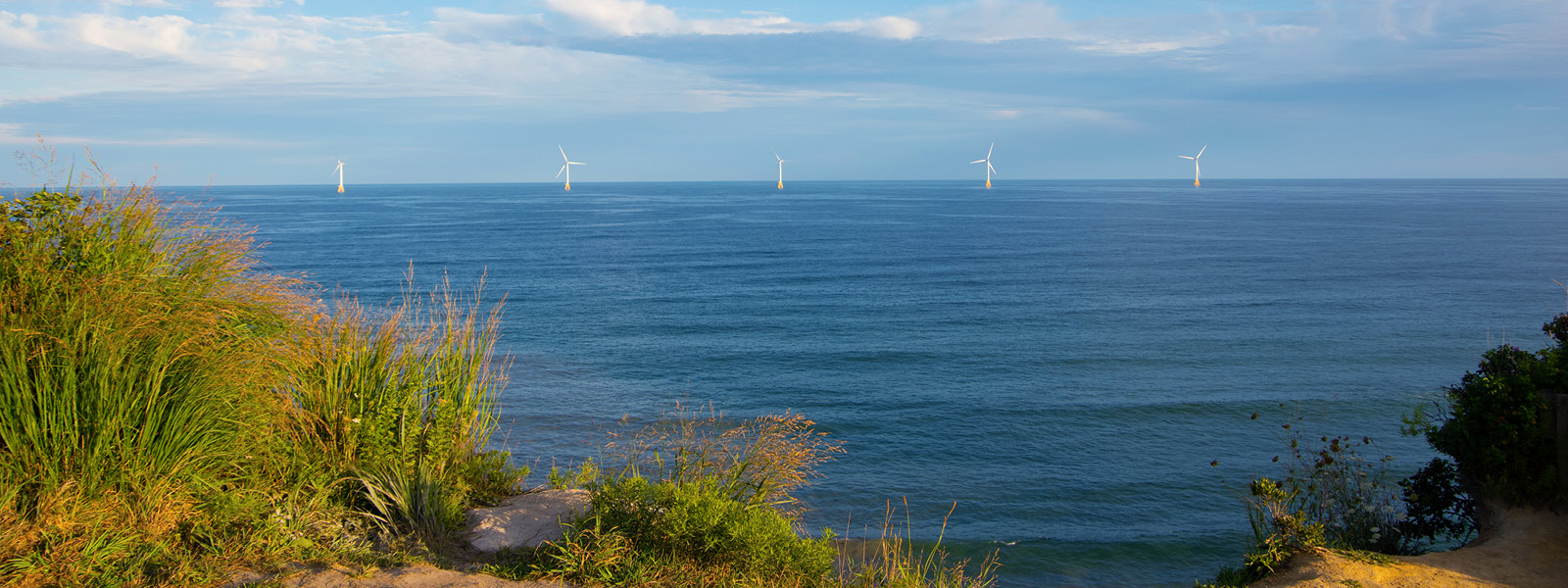
To meet project goals, proponents must understand rules related to the environment, species and habitats, and visual and noise impacts
The US offshore wind industry has gained momentum in recent years, and it is poised for significant additional growth in the future.
On May 11, 2021, the Bureau of Ocean Energy Management (BOEM) announced its decision to approve the construction and operation of Vineyard Wind, the first commercial-scale offshore wind project in the US. The country’s first offshore facility, the Block Island Wind Farm, has been generating power since 2016.
Four other projects have made progress in the permitting process in 2021. In June, BOEM announced that it had begun the environmental review process for Empire Wind, a proposed wind farm off the coast of New York. Other projects under review are South Fork, off the coast of Long Island, Ocean Wind, off the coast of New Jersey, and Revolution Wind, off the coast of Rhode Island.
The Biden administration has signaled strong support for renewables, including wind. The Interior, Energy and Commerce Departments announced a shared goal to deploy at least 30 gigawatts (GWs) of offshore wind in the US by 2030. As part of that resolution, BOEM intends to hold new lease sales and finalize the review of at least 16 Construction and Operations Plans (COPs) for wind development, which could bring more than 19 GWs of wind capacity online by 2025. In pursuit of these goals, the administration recently announced it is opening parts of the California coast to offshore wind development.
Moreover, states are committing to purchase renewable power at an accelerating rate, and companies are increasing their investments in the space.
To capture the opportunity, wind proponents will have to comply with a sometimes complex set of legal regulations related to the environment; species and habitats; and history, culture, recreation and commerce (including tourism). Opponents of particular wind projects may use federal regulations to challenge their legitimacy at multiple points throughout the development process. In the case of one early proposed wind farm, opponents filed more than two dozen lawsuits in an effort to stop the project.
To help proponents of offshore wind, we provide an overview of the federal environmental regulations that they may have to navigate to get projects approved, built, launched—and eventually, decommissioned. Participants that understand the regulatory landscape at the outset will be much better positioned to succeed at every phase of their project’s life cycle.
It can take years for offshore wind projects to get through the regulatory process
The federal National Environmental Policy Act (NEPA) is the principal US environmental law that dictates how environmental permitting and review works for offshore wind projects in US waters. NEPA applies to projects that have a federal nexus, such as those that need a significant federal permit or that involve land, federal money or a federally managed transmission line.
Opponents often use NEPA to challenge wind projects. Projects that are subject to NEPA review may often face significant delays, particularly because the NEPA process is public.
Prior to permitting and construction, an offshore wind project under NEPA review will undergo an environmental analysis called an Environmental Assessment (EA). EAs generally evaluate the need for the proposed projects, identifies and assess any reasonable alternatives, and estimates the environmental social, economic and cultural impacts of the proposed project and any alternatives.
Based on the results of an EA, the BOEM may prepare a more rigorous assessment, called an Environmental Impact Statement (EIS), which is open to public review and comment, and responds to substantive public comments. BOEM acts as the lead agency for the EIS and coordinates with other federal and local agencies to ensure all relevant federal and state requirements are considered before it takes any action.
The environmental review process for offshore wind projects evolved as the sector grew. For example, BOEM has indicated that environmental reviews for offshore wind projects will now account for the cumulative impacts of all offshore wind projects that have announced state solicitations for lease areas, not just the impact associated with those projects that have already been approved or submitted for approval.
This policy took shape as BOEM reviewed the impact of the Vineyard Wind project. BOEM issued a draft EIS for Vineyard Wind in 2018 that considered the impacts of Vineyard Wind along with all other offshore wind farms along the Atlantic coast with an approved or submitted COP. The supplemental draft EIS for Vineyard Wind that BOEM published in 2020 considered all announced state solicitations for existing lease areas—accounting for the impact of developing 22 GWs of offshore wind capacity across 2,000 wind turbines built over a ten-year period.
Further changes to the NEPA review process are likely. For example, President Biden's Climate Science Executive Order, issued on January 27, 2021, directs the White House Council on Environmental Quality (CEQ) to rescind draft guidance issued on June 26, 2019 (Draft National Environmental Policy Act Guidance on Consideration of Greenhouse Gas Emissions) that would have limited the scope of the required analysis for greenhouse gas emissions and climate change impacts in the NEPA review process. The executive order instructs CEQ to revert to guidance issued in August 2016 (Final Guidance for Federal Departments and Agencies on Consideration of Greenhouse Gas Emissions and the Effects of Climate Change in National Environmental Policy Act Reviews) and "review, revise, and update" the August 2016 guidance. The 2016 guidance recommends that agencies use a more expansive approach to quantifying and assessing greenhouse gas emissions and climate change impacts. CEQ is expected to issue new draft guidance regarding the assessment of greenhouse gas emissions under NEPA.
In addition, on April 16, 2021, the Secretary of Interior issued an order establishing a climate change task force to coordinate efforts including promoting renewable energy development on federal lands and waters, and directing agencies to maintain robust environmental reviews under NEPA, including in their consideration of greenhouse gas emissions and climate change impacts (e.g., by "using appropriate tools, methodologies, and resources available to quantify [greenhouse gas] emissions and compare [greenhouse gas] quantities across alternatives").
Over the past decade, project proponents in the US have routinely commissioned surveys to assess how onshore wind projects impact bird and bat species and their habitats, and they have developed species and habitat conservation plans that are aligned with guidance issued by the federal government. More recently, US offshore wind proponents have begun to follow suit.
Project proponents typically take these steps to avoid liability under the following federal wildlife laws related to avian species: the Migratory Bird Treaty Act (MBTA); the Bald and Golden Eagle Protection Act (BGEPA); and the Endangered Species Act (ESA), which protects species and habitats designated as endangered or threatened by the Fish and Wildlife Service (FWS).
These laws generally prohibit the unauthorized "take" of listed bird or bat species. The term "take" means to harass, harm, pursue, hunt, shoot, wound, kill, trap, capture or collect, or attempt to engage in any such conduct. For example, if a protected bird is harmed in a collision with a wind farm turbine, the wind farm operator could be subject to liability under one of these laws. However, FWS may allow a wind energy project an ”incidental take“ of an endangered or threatened species by issuing an incidental take permit. Wind project proponents often obtain these permits to protect themselves from future liability.
Prudent wind project developers frequently work with federal regulators during a project’s pre-construction and construction phases to try to obtain a determination that the project is unlikely to affect any listed or endangered species or critical habitat, and that no permits are needed under the MBTA, ESA, BGEPA or similar federal laws. This type of determination protects against claims for injunctions by private plaintiffs and reduces the likelihood that federal agencies will pursue enforcement actions in the event of a ”take“ of a listed species in connection with a wind project.
To evaluate the impact on birds and bats, the FWS cooperates with BOEM throughout the NEPA review process, providing technical and biological information to enable analysis during project planning. The ESA requires that a federal agency such as BOEM informally consult with FWS to ensure that its actions are not likely to jeopardize the continued existence of any endangered or threatened species.
BOEM must prepare a Biological Assessment (BA) to evaluate the potential effects of any offshore wind farm that may affect any listed species or critical habitat listed (or proposed to be listed) under the ESA. If, based on the BA, the action is likely to adversely affect a listed species, formal consultation with FWS is required.
In May 2020, BOEM published its "Guidelines for Providing Avian Survey Information for Renewable Energy Development on the Outer Continental Shelf." The guidelines provide recommendations about timing, scope and technical issues for developers. But note that there may be significant differences in the avian surveys developers are required to conduct, depending on the scale and/or complexity of their proposed projects and the availability of existing data.
BOEM recommends that developers conduct two annual cycles of boat-based surveys, traditional aerial surveys or high-resolution digital aerial surveys to determine spatial temporal distribution, abundance and behavior of avian species affected by their projects. If more data or analyses are needed to satisfy all state and federal environmental review processes, BOEM may require additional avian surveys before, during or after construction.
For example, Block Island Wind Farm, one of only two operating commercial offshore wind farms in the US, completed a three-year site-specific, pre-construction avian and bat survey and committed to conducting additional post-application avian and bat surveys under a protocol reviewed and approved by FWS. Post-application, Block Island Wind Farm conducted surveys for bat acoustic monitoring (during construction), ship-based bird monitoring (two years during operation), nocturnal migrant collision monitoring (three non-consecutive years during operation) and avian radar monitoring (three non-consecutive years during operation).
Offshore wind farms in US waters can affect a wide range of marine life, including scallops, quahogs, clams, finfish, marine mammals and sea turtles. As a result, US environmental law generally requires that wind project developers ensure impacts to marine species are appropriately considered, and that they site projects to avoid significant impacts and implement other mitigation measures.
While many marine species are listed as endangered or threatened and protected by the ESA, several additional laws intended to protect marine species also apply to offshore wind project development. The Magnuson-Stevens Act (MSA) governs marine fisheries management, fostering long-term biological and economic sustainability of federal fisheries. Among other things, the MSA protects marine and migratory fish species by establishing essential fish habitats (EFHs)—protected areas such as coral reefs, kelp forests, bays, wetlands and rivers necessary for fish reproduction, growth, feeding and shelter.
The Marine Mammal Protection Act (MMPA) covers all marine mammals, including whales, dolphins and seals, by preventing their killing or harassment. If a proposed wind farm may result in harassment of a marine mammal protected by the MMPA, the project proponent may submit an application to the National Marine Fisheries Service (NMFS) for an Incidental Harassment Authorization (IHA), which authorizes impacts to marine mammals that are no more than negligible and that have no “unmitigable” adverse impact. For example, in May 2020, NMFS issued an IHA to the Coastal Virginia Offshore Wind project, the second offshore wind farm
constructed in the US, to allow incidental harassment of marine mammals during construction activities off the coast of Virginia. An IHA is effective for up to one year.
The NMFS is the agency generally responsible for implementing these laws. As FWS does, NMFS cooperates with BOEM throughout the NEPA review process to ensure that impacts to marine species within its jurisdiction are considered. If a proposed wind farm may affect threatened or endangered marine species or a species protected by the MMPA that is within NMFS’s jurisdiction, BOEM must submit a BA to NMFS assessing those potential impacts. If a proposed action may adversely affect an EFH, BOEM must consult with NMFS and, if necessary, submit an EFH assessment.
In June 2019, BOEM issued Guidelines for Providing Information on Marine Mammals and Sea Turtles for Renewable Energy Development on the Atlantic Outer Continental Shelf (MMSTG). These provide recommendations for developing information on marine mammals and sea turtles in compliance with BOEM regulations. These guidelines note that the marine species surveys that a wind project developer is required to conduct may vary significantly based on regional biology, the scale and location of the proposed action and the availability of existing data. Nevertheless, the MMSTG provide recommendations about timing, scope and technical issues for wind project proponents.
BOEM recommends two annual cycles of vessel-based surveys or aerial surveys to determine spatial temporal distribution and abundance of marine mammal and sea turtle species, and two annual cycles of passive acoustic monitoring surveys to establish baseline ambient sound levels and presence of vocalizing marine mammals. To the extent possible, a proposed offshore wind farm should be sited to avoid affecting important habitats that support marine life, such as areas where eelgrass grows. In addition, construction activities can be scheduled to avoid seasons associated with spawning or breeding, and project proponents may use techniques and equipment that minimize disturbances.
Offshore wind project developers may conduct site-specific surveys before, during or after construction to provide additional assessment and mitigation of potential impacts. For example, Block Island Wind Farm agreed to conduct a four-year post-construction lobster survey to assess impacts on lobsters and shellfish, and a five-year post-construction trawl survey to assess impacts on finfish.
Because of their coastal locations, many proposed offshore wind farms in the US are near popular recreation and tourist areas. Visual impacts to historic or culturally sensitive properties can be more significant if the proposed project is near a historic property or culturally sensitive resource.
Cape Wind, one of the most highly publicized failed offshore wind projects in the US, was unsuccessful largely due to opposition from property owners concerned about adverse visual effects of a proposed offshore wind farm in Massachusetts’ Nantucket Sound. However, offshore wind projects in the US currently under development or review today are generally located further offshore, and are therefore less likely to be subject to significant opposition due to visual impacts.
No laws or regulations specifically govern visual impacts in the US, but the National Historic Preservation Act (NHPA) requires that federal agencies like BOEM consider the adverse impacts of their actions on properties that may be eligible for or listed in the National Register of Historic Properties (NRHP). The NRHP includes districts, sites, buildings, objects and cultural resources. Further, BOEM must provide the Advisory Council on Historic Preservation (ACHP) with an opportunity to comment, and it must consult with state historic preservation offices and representatives of federally recognized Native American tribes.
To determine whether the landscape can absorb the visual change resulting from a proposed wind project without significantly affecting scenic quality or viewer enjoyment, a project proponent generally prepares a Visual Impact Assessment (VIA). The VIA uses techniques such as distance modeling, visual simulations and professional rating panels to quantify the potential impact on stakeholders. Ultimately, the VIA determines whether the threshold of acceptable visual impact will be exceeded and considers any measures that will reduce or mitigate visual impact, such as uniform design, lighting and siting.
To assess the noise impacts of a proposed offshore wind farm, a project proponent generally conducts in-air and underwater acoustic modeling studies. However, the noise impacts of offshore wind farms are largely unregulated by federal law.
Some towns and municipalities have noise ordinances, but operational noise from offshore wind farms is unlikely to violate these ordinances or be considered a significant impact for nearby residents because of the projects’ distance from the coast. For example, the Town of New Shoreham, near Block Island Wind Farm, has a nighttime limit of 55 A-weighted decibels (dBA). Acoustic modeling studies for Block Island Wind Farm found that, in all modeling scenarios, sound levels at identified shoreline noise-sensitive receptors were likely to be below 25 dBA. In addition, Block Island Wind Farm is approximately three miles from the coastline, far closer than most proposed offshore wind projects.
If construction activities associated with a wind project, such as pile-driving, are expected to generate short-term, temporary noise impacts at sensitive onshore receptors, a project proponent may elect to limit these activities to daytime hours to avoid running afoul of nighttime noise ordinances. However, noise impacts during construction are often more significant for marine species that are sensitive to pile-driving noise.
The evaluation of noise impacts on marine mammals is generally performed as part of a biological assessment and submitted to NMFS for review along with the results of any underwater acoustic analysis. NMFS may then assess the significance of any noise impacts on marine life. To alleviate potential mortality, a project proponent may implement mitigation measures such as using fixed passive acoustic monitoring buoys, autonomous passive acoustic monitoring devices and noise reduction technologies. If necessary, the project proponent may apply to the NMFS for an IHA to authorize any potential exposure of protected species to disturbing noise levels.
Federal offshore leases issued by BOEM generally authorize offshore wind farms to operate for up to 25 years, although leases may be extended at BOEM’s discretion. Projects are required to address decommissioning impacts in their COPs, and BOEM must assess these impacts in its review of each project. However, BOEM regulations also provide a number of requirements regarding the decommissioning of offshore wind farms, including financial assurance requirements and removal obligations.
Absent permission from BOEM, project proponents must submit a decommissioning application that includes all planned decommissioning activities, any resources or activities that could be affected by the proposed decommissioning activities, results of any recent biological surveys, mitigation measures that will be used to protect archaeological and biological resources and prevent unauthorized discharges of pollutants, and whether the area will be surveyed after removal to determine any effects on marine life. If the proposed decommissioning activities will result in any significant change to the impacts previously identified in a project’s construction and operation plan submitted to BOEM, or require any additional federal permits, BOEM will be required to perform an updated NEPA analysis and other regulatory reviews as necessary.
Once approved, projects must complete decommissioning within two years of lease termination and either reuse, recycle or responsibly dispose of all materials removed. BOEM regulations require that projects remove or decommission all installations (including cables and pipelines) and clear the seafloor of all obstructions created by the project. All facilities must be removed 15 feet below the mudline.
Wind project developers may request that certain facilities remain in place following termination of the lease (i.e., if certain components or equipment, such as the onshore substation, remain fit for continued service). However, BOEM will consider potential impacts to the marine environment, impacts on marine safety and other factors in determining whether to approve such a request. Alternatively, a project may request that certain facilities be converted to artificial reefs or "otherwise toppled in place," subject to BOEM approval.
White & Case means the international legal practice comprising White & Case LLP, a New York State registered limited liability partnership, White & Case LLP, a limited liability partnership incorporated under English law and all other affiliated partnerships, companies and entities.
This article is prepared for the general information of interested persons. It is not, and does not attempt to be, comprehensive in nature. Due to the general nature of its content, it should not be regarded as legal advice.
© 2021 White & Case LLP